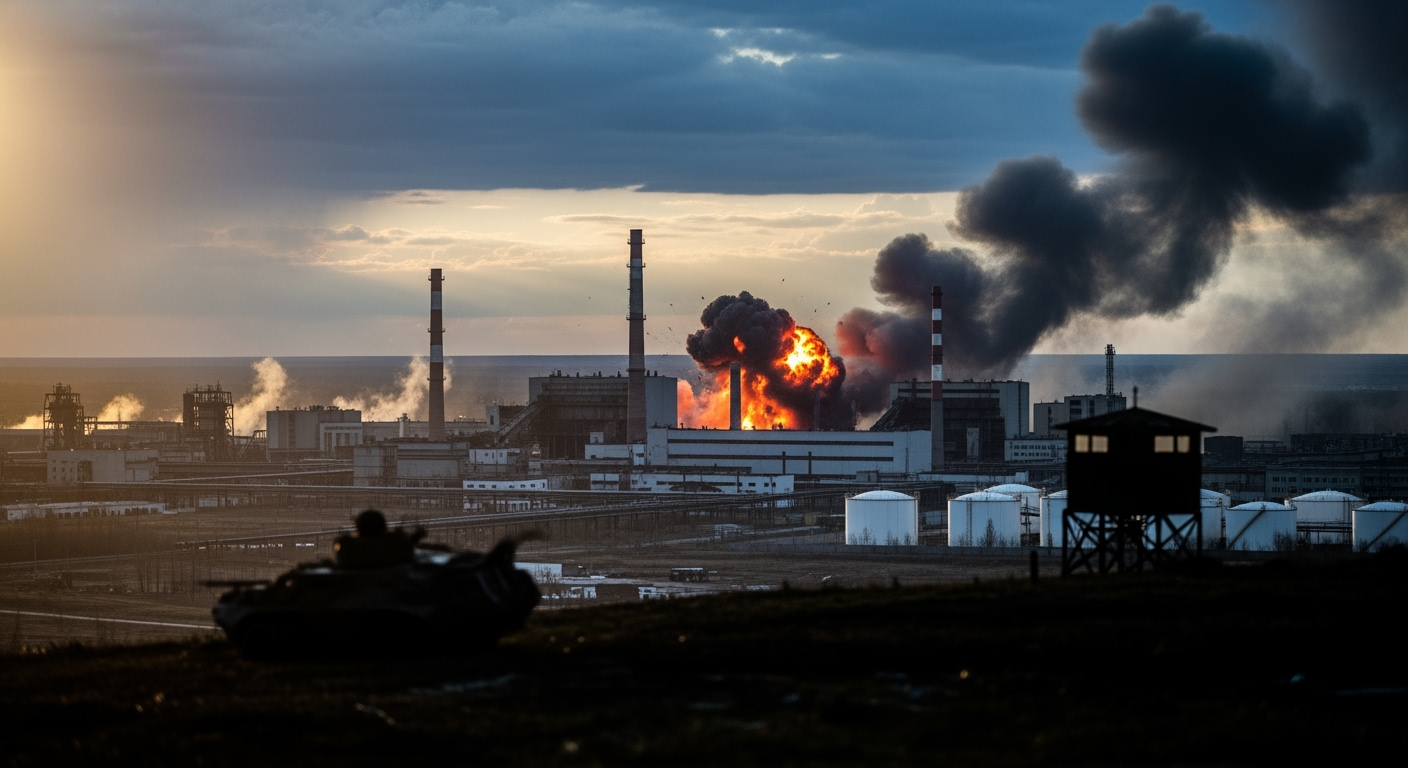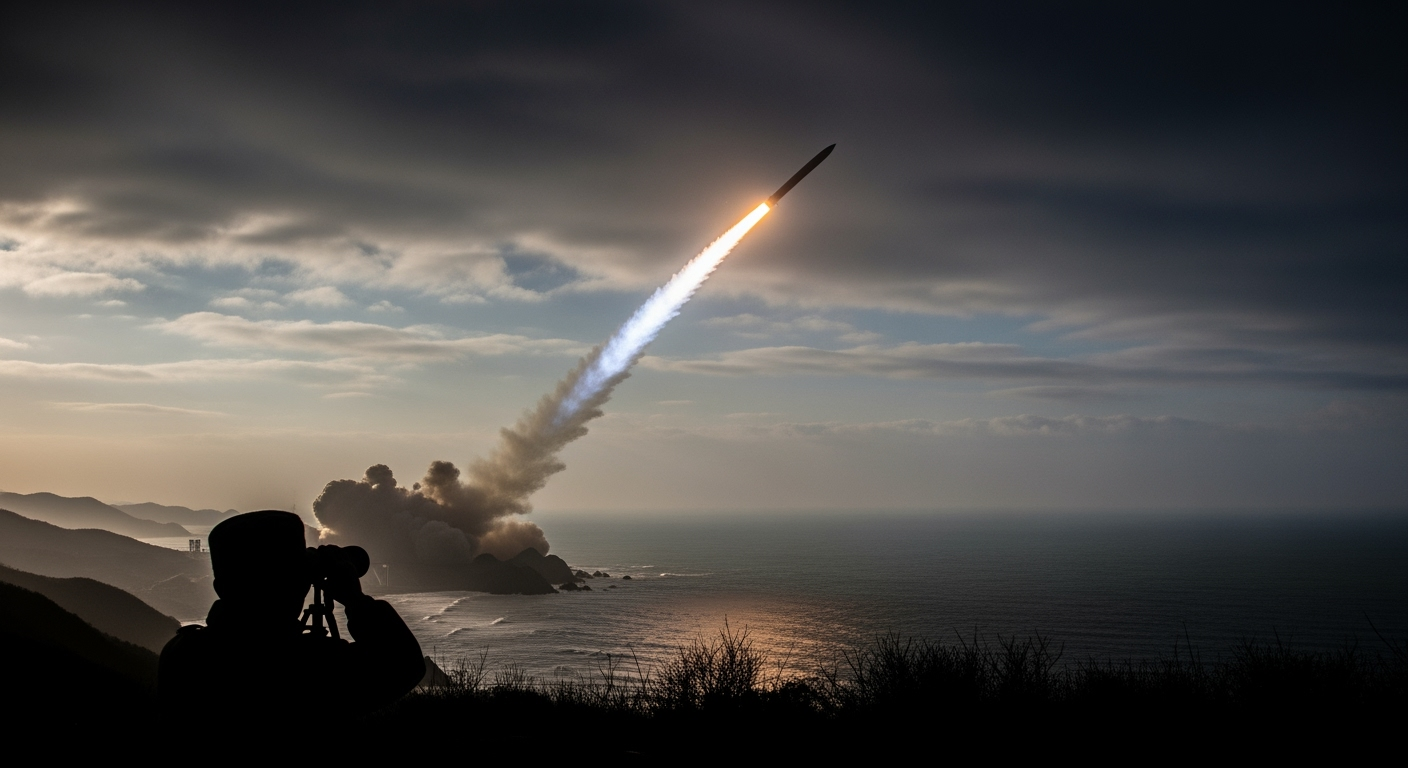Related Articles

Kyiv Delivers Blow to Russian War Machine with Strike on Key Explosives Plant




SEOUL, South Korea – North Korea launched an unidentified ballistic missile eastward into the sea on Wednesday, October 22, 2025, marking its first such test in five months and immediately drawing condemnation from regional powers. The provocation comes days before South Korea is set to host a major Asia-Pacific Economic Cooperation (APEC) summit, an event anticipated to bring together world leaders, including US President Donald Trump and Chinese President Xi Jinping. The launch underscores Pyongyang's persistent drive to advance its weapons programs despite international sanctions and warnings, further complicating an already volatile geopolitical landscape in Northeast Asia.
South Korea's Joint Chiefs of Staff confirmed the launch, stating the missile was fired in an eastward direction without immediately providing details on its type or flight trajectory. Yonhap news agency further specified the projectile landed in the sea off North Korea's east coast. This latest test follows a period of relative calm since May 8, 2025, when Pyongyang last launched multiple short-range ballistic missiles. It also marks the first missile demonstration since South Korean President Lee Jae Myung took office in June with a pledge to restore peace on the Korean Peninsula.
While South Korean and US militaries initiated immediate analyses of the launch specifications, Japan's Coast Guard and Defense Ministry did not issue alerts, potentially suggesting the missile was of a shorter-range variety that posed no direct threat to Japanese territory. Nevertheless, the United States swiftly condemned the test, urging Pyongyang to refrain from further "unlawful and destabilizing acts." Such launches are routinely viewed by Washington, Seoul, and Tokyo as blatant violations of multiple United Nations Security Council resolutions.
The timing of North Korea's missile launch is particularly salient, occurring just days before South Korea prepares to host the APEC Economic Leaders' Meeting in Gyeongju. This annual summit, focused on promoting economic integration and trade, is expected to attract a high-profile gathering of international dignitaries, including US President Donald Trump and Chinese President Xi Jinping, both of whom have played pivotal roles in past diplomacy with Pyongyang. Analysts widely interpret such provocations as calculated attempts by North Korea to assert its presence on the global stage and to underscore its status as a nuclear weapons state. Experts suggest that by demonstrating its military capabilities ahead of international gatherings, North Korea aims to gain leverage, potentially seeking a pathway for the lifting of punishing economic sanctions imposed by the UN.
North Korean leader Kim Jong Un has consistently accelerated the pace of weapons development since the collapse of his high-stakes nuclear diplomacy with then-President Trump in 2019, which faltered over disagreements concerning US-led economic sanctions. Earlier in October, North Korea notably showcased its latest intercontinental ballistic missile (ICBM) at a grand military parade in Pyongyang, an event attended by the Chinese premier. State media described the Hwasong-20 ICBM as the country's "most powerful nuclear strategic weapon system," further highlighting Pyongyang's unwavering commitment to expanding its arsenal.
North Korea's ballistic missile program has been a cornerstone of its national security strategy for decades, evolving significantly from its early reliance on artillery rockets to the development of sophisticated short-range, medium-range, and intercontinental ballistic missiles. Pyongyang views its nuclear weapons as an indispensable "guarantor of regime security" and has repeatedly affirmed its intention to maintain and bolster these capabilities, rejecting international calls for denuclearization. North Korea's constitution was amended in May 2012 to designate the country as a "nuclear-armed state," with laws stipulating that nuclear weapons serve to deter aggression and can only be used by the Supreme Commander to repel invasion.
Current estimates suggest North Korea possesses an inventory of approximately 800 road-mobile missiles and had assembled an estimated 50 nuclear warheads as of January 2024, with sufficient fissile material for an additional 70-90 weapons. The country has also made significant strides in solid-fueled missile technology, having tested the Hwasong-18 and Hwasong-19 ICBMs, which offer enhanced mobility and rapid deployment capabilities. Recent reports have also raised international concerns about North Korea's alleged supply of ballistic missiles to Russia for use in Ukraine, with some analysts speculating that this cooperation could lead to reciprocal technology transfers, further advancing North Korea's weapons of mass destruction programs.
The international community has consistently condemned North Korea's ballistic missile and nuclear activities, with the United Nations Security Council adopting numerous resolutions since 2006. These resolutions unanimously demand that North Korea cease its illicit activities, abandon its nuclear and ballistic missile programs in a "complete, verifiable, and irreversible manner," and comply with its international obligations. However, despite these unified demands and economic sanctions designed to curtail its programs, Pyongyang has continued its aggressive development path, presenting an ongoing challenge to global non-proliferation efforts.
The Security Council has often faced divisions, with China and Russia at times opposing stronger punitive measures against North Korea, complicating unified international responses. In response to previous ICBM tests, the United States and South Korea have conducted joint air power drills, showcasing their combined capabilities to deter and counter potential threats. North Korea, in turn, often portrays these joint military exercises as rehearsals for invasion, using them as justification for its own weapons development.
The latest missile launch serves as a stark reminder of the persistent security dilemma on the Korean Peninsula. It highlights the deeply entrenched cycle of provocation, international condemnation, and stalled diplomatic efforts. As world leaders gather for the upcoming APEC summit, the challenge of reigning in North Korea's nuclear and missile ambitions remains a critical foreign policy priority, demanding a complex interplay of deterrence, diplomacy, and sanctions to navigate a path towards regional stability.